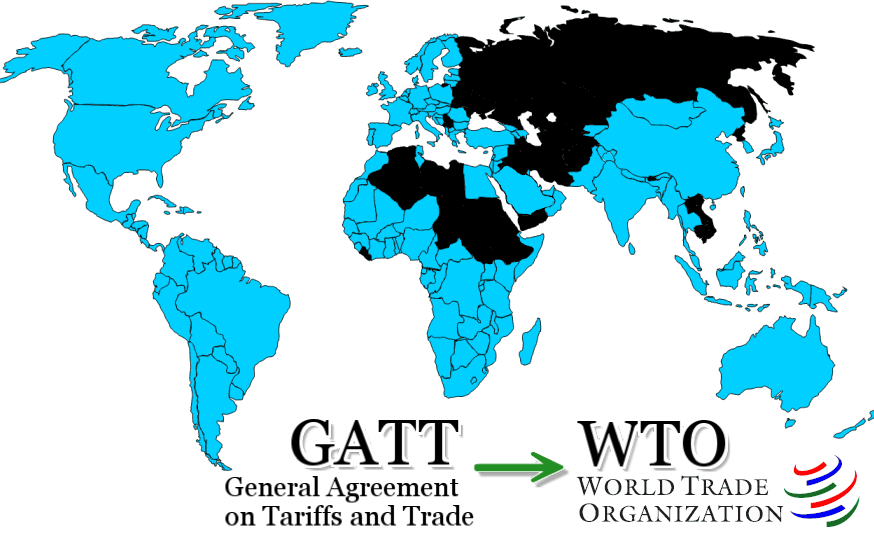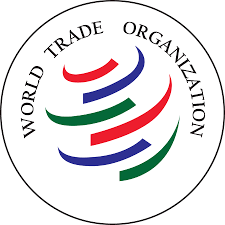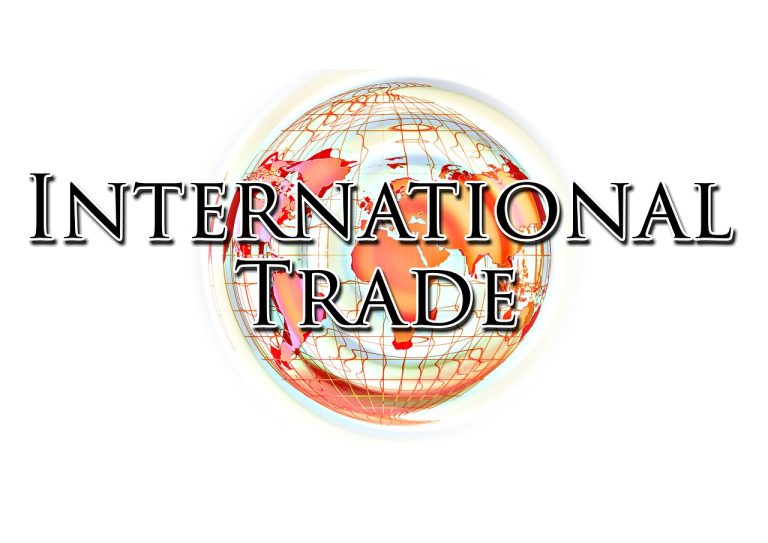International trade is the exchange of goods and services across international boundaries. It is essential for the global economy to function efficiently. If a product or service is produced in Kenya, and then it is sold to a person or business in the US, then the transaction is viewed as an export for Kenya and an import for the US. Every country engages in both exporting goods and services to other countries and importing goods and services from foreign trade partners.
These goods can range from manufactured items such as machinery to agricultural goods like processed foods, while services include nonmaterial goods such as advertising and telecommunications. The global trade system is a complex system. It involves long supply chains. Products could be sourced, assembled, packed and sold in several and different locations on the globe. As an instance, the materials used to make your phone or boots were probably manufactured in one country, processed in another, assembled in the third one, and packed in the fourth before they eventually end up in a store near you.
Mercantilism and Specialization: Why Can’t Nations Produce Their Own Goods?
Before 1900, most European countries anchored their economies on the system of self-sufficiency called mercantilism. Mercantilism meant boosting exports, lowering imports, and increase the country’s gold assets. The country imposed high tariffs on imports as part of this strategy. This not only discouraged imports but also obtained revenue from them. The policy of mercantilism hindered international trade by setting up trade barriers. It was also responsible for the advent of colonialism where the colonies supplied the raw materials. Nations worked to manufacture as much as possible domestically, even producing inefficient items themselves.
In the late 18th century, the classical economists debunked the ancient rhetoric of self-sufficiency. They promoted the concept that mutually beneficial trade can lead to the development of societies through comparative advantage. According to this theory, countries could enhance their prosperity by focusing on producing goods in which they excel and importing those in which they lack expertise, benefiting all parties. Specialization was the name of this strategy. It gave leeway to nations to use their time and resources to innovate, produce and market new products that they were good at.
Gross Domestic Product (GDP)
Today, countries are assessed with the ability to utilize their limited resources most effectively to bring about economic growth. This criterion is typically measured using through Gross Domestic Product (GDP). GDP reflects the total value of final goods and services produced by a country over a year. The determination of GDP served an important function of stimulating trade and economic development.
The productive nature of a country depends on the human, physical, technological and financial resource that it possesses. These materials are what dictates the efficiency and effectiveness of the production of goods. Meaning, different countries excel in exporting different products based on their available resources. To elaborate, Costa Rica is particularly famous for pineapple exports and coffee. Likewise, Germany is on the list of countries that export a lot of cars and computers. The new ideas such as “comparative advantage” led to the spread of international trade. Moreover, advancements in technology and transportation were the highlights that enabled businesses to reach far and distant markets with ease. Large container ships, cargo planes, that are affordable, and fast communication channels enabled the producers, who were located in different parts of the planet, cater to their millions of customers worldwide.
The World Trade Organization
Following the end of the WWII, the newly created United Nations crafted the General Agreement on Tariffs and Trade (GATT). This agreement lowered numerous trade barriers such as tariffs and set rules for countries to participate in free trade. In 1995, the GATT transformed into the World Trade Organization (WTO). This was done in an effort to remove all trade barriers, and to adjust to changes in the global economy. The WTO broadened its scope to encompass not just physical goods but also services. In addition, it introduced regulations pertaining to intellectual property rights like copyright and patents. Moreover, the WTO plays an important role in providing a forum in which nations can develop and implement international trade rules, as well as file complaints when they suspect violations of these regulations.

According to the theory of comparative advantage, a nation should sell a high-quality product and technology at a low cost. Otherwise, it is possible that it will lose its competitive edge. Iit will also have a tough time to make serious progress in the world of business. This possibility may lead to the closing of the businesses or factories and the loss of jobs. Here, the country may need to adjust its economy to concentrate on the production of commodities with which it has a competitive advantage. This is the essence of international trade.

Criticisms Leveled at the World Trade Organization
Some countries and industries bypass international trade rules. The World Trade Organization (WTO) gets involved at this point. The US labor unions want the WTO to scrutinize trade practices that they believe are unfair and are eroding American wages, as a result of China’s ways of business. Developing countries have criticized the WTO for favoring affluent nations and disregarding their specific challenges.
For example, government supports for developed countries to subsidize agriculture make it very difficult if not impossible for products from low-income countries to compete in such markets. The WTO has not effectively addressed these issues. Furthermore, it has been criticized for ignoring environment and labor protections. Addressing these concerns is particularly difficult. Any amendments to the rules require agreement among the 164 member countries of the WTO. In response, some nations opt to create bilateral or regional trade agreements to cater to their specific needs and trade strategies.
Balance of Trade and Trade Deficits
Balance of trade is the difference between a nation’s exports and imports. A country experiences a trade surplus or a trade deficit. A nation that has a surplus, the value of its exports is greater than that of its imports. That country gets large amount of foreign reserve currencies. For instance, if Brazil exports $200 billion worth of goods and imports $160 billion, its net exports would be $40 billion leading to a trade surplus for Brazil.
When there is a trade deficit or a negative trade balance, a country’s imports are higher than its exports. This means that the country is spending more money than it makes. On this account, the country may have to drain its reserves and even borrow money from other countries for imports. Many nations thus could then rely on their external creditors to fund the deficit in their own market. This trend which persists for years.
Currency Exchange Rates
International trade relies on a country’s demand of goods, economic situation, political environment, interest rates as well as exchange rates. Basically, the exchange rate is the value of a country’s currency when it is traded for the other nation’s currency.
Now, picture that the exchange rate between the Kenyan shilling and the US dollar is 150 shillings to $1. If an American tourist in Kenya wishes to purchase a t-shirt priced at 600 shillings, they would need to exchange $4 for to get the 600 shillings. Similarly, if a Kenyan traveler in the US wants to buy a $20 bag, they would have to convert 3,000 shillings into dollars.
Increased Exchange Rates
If the exchange rate increases to 200 shillings per dollar, that an American tourist would now only need to spend $3 to buy a 600 shilling t-shirt in Kenya, instead of $4. This indicates that the dollar has strengthened in value or appreciated. Similarly, a Kenyan tourist looking to purchase a $20 bag would now require 4,000 shillings instead of 3,000 shillings. The same principle applies to imports and exports as well. The stronger dollar makes it more affordable for the US consumers to purchase the goods from other countries. On the flip side, the American exports might be pricier. Consequently, US imports increase while exports decline.
Decreased Exchange Rates
Alternatively, what would happen if the exchange rate dropped to 100 shillings per dollar? In this case, the American tourist would require $6 to purchase the t-shirt. This indicates a decrease in the value of the dollar or depreciation. Conversely, the Kenyan tourist looking to buy the $20 bag would only need 2,000 shillings. When the dollar depreciates, imported goods become more costly while US exports become more competitive in foreign markets. Consequently, there is a reduction in US imports and an increase in exports.
Floating Exchange Rates and International Trade
The modern financial system lacks a fixed exchange rate due to the absence of a gold standard system. Supply and demand determine the exchange rates for currencies such as the shilling and the dollar. Therefore, they fluctuate. The strength of a currency is based on the strength of the economy it represents in comparison with other economies in the world. Changes in the economy may cause differences of currencies and exchange rate changes.
The market determines a currency’s value relative to another currency. Increased demand leads to value appreciation and increased supply results in value depreciation. For example, when the US buys more goods from Kenya, they trade dollars for shillings. This leads to an increase in demand for shillings and causes the shilling to strengthen, while the dollar weakens. Banks also influence exchange rates when they engage in currency trading and make the necessary adjustments.
While there are some countries that have a free-floating currency, others follow a currency fixing or currency pegging option. In these situations a central bank of a country enters the foreign exchange market. It purchases or sells corresponding currencies with the aim to keep exchange rates within an acceptable limit. Chinese government had a well-known tendency for buying up US dollars in order to artificially lower the value of the Chinese currency. The US imported products from China, which strengthened the Chinese yuan as a result. Consequently, to address this problem, the Chinese government would sell dollars. This move kept the exchange rate steady, hence allowing Chinese goods to remain affordable to American citizens.
Competitive Devaluation
In the global economy, countries can manipulate the value of their currency by engaging in measures that artificially lower its value. When a country devalues its currency, it causes the currencies of other countries to appreciate in comparison. As a result, the products of the country with the devalued currency become more affordable. This leads to a desire for other countries to also devalue their own currency. This can result in currency wars, also known as competitive devaluation. This means that countries compete to achieve a lower exchange rate for their currency.
A decreased currency price leads to cheaper goods and services. This then boosts demand for those goods and services both domestically and internationally. Due to this, there is an increase in the industries that produce such items. This increased competitiveness in their industries can lead to countries with weakened currencies being able to produce cheaper products. Consequently, a nation with a devalued currency can attract industrial relocation due to cheaper production costs. Such a phenomenon has been witnessed in numerous cities globally. These cities are still grappling with the aftermath of losing their industrial foothold.
Conclusion
International trade has fostered a highly interconnected global economy. It has provided a wider range of affordable and high-quality goods and services to more people. This has resulted in the creation of numerous jobs and enhanced international relationships, contributing to global stability. However, it can also negatively impact individuals, businesses, and communities. Imports can cause local companies to struggle against superior or cheaper products from other regions. Although trade will inevitably have both winners and losers, it is an integral part of modern society. Therefore, the primary challenge for policymakers is to assist those who are at a disadvantage. They ought to offer support and training for new employment opportunities. They should also ensure that everyone can continue to reap the benefits of a system that offers increased choices for consumers and more opportunities for producers worldwide.


